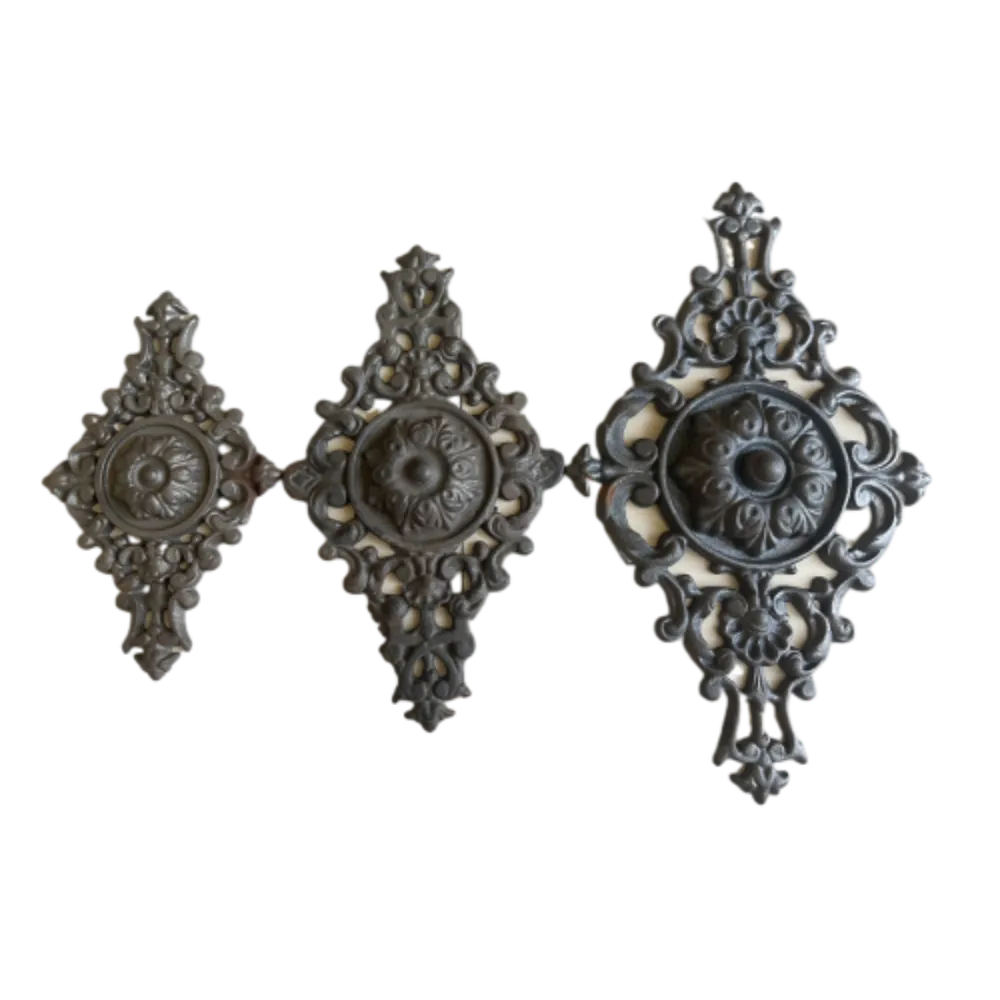cast iron spears and finials
Cast Iron Spears and Finials A Testament to Craftsmanship and Durability
Cast iron has long been celebrated for its versatility, strength, and aesthetic appeal. Among the various forms it takes, cast iron spears and finials stand out as striking architectural and ornamental features that can elevate both contemporary and traditional designs. This article delves into the history, craftsmanship, applications, and enduring charm of cast iron spears and finials.
Historical Context
The use of cast iron dates back centuries, with its origins tracing back to ancient China. However, it truly gained prominence in 18th and 19th-century Europe during the Industrial Revolution, which introduced new technologies for casting metal. The ability to produce intricate designs at a lower cost than wrought iron made cast iron an appealing option for architects and builders.
Spearheads and finials became especially popular during this era, often seen atop fences, gates, and buildings. These decorative elements not only served a practical purpose—deterring intruders and marking property boundaries—but also conveyed a sense of elegance and sophistication. The designs varied widely, reflecting the artistic styles of the period, from Gothic to Victorian motifs.
Craftsmanship
The production of cast iron spears and finials involves a meticulous process that combines artistry with engineering. First, a mold is created from patterns of the desired shapes. Once the mold is complete, molten iron is poured into it and allowed to cool, solidifying into the desired form.
What sets cast iron apart from other metals is its ability to capture fine details, which is particularly important for decorative elements. Skilled artisans and foundries often take pride in their ability to create intricate patterns, textures, and designs that can turn an ordinary spear or finial into a piece of art.
cast iron spears and finials

Furthermore, the durability of cast iron means that these pieces can withstand the rigors of weather and time, making them a sound investment for both residential and commercial properties. Over the years, many historic structures still proudly display their original cast iron elements, bearing witness to the enduring craftsmanship involved in their creation.
Applications
Cast iron spears and finials can be found in various applications across different settings. In architecture, they are commonly used as decorative tops on railings, gates, and fences, adding character and elegance to outdoor spaces. The sharp points of spearheads, historically designed for defensive purposes, also convey a sense of security, making them a favored choice for property boundaries.
In gardens and parks, decorative finials serve to enhance the aesthetic appeal of pathways, benches, and pergolas. They can also be used in sculptures and art installations, showcasing the versatility of cast iron as a medium for artistic expression.
Homeowners and designers seeking to incorporate cast iron elements into their spaces appreciate the range of available styles, from ornate Victorian designs to minimalist contemporary aesthetics. This versatility allows for seamless integration into various architectural styles, ensuring that there is something for everyone.
The Timeless Appeal of Cast Iron
In today's world, where modern materials and technologies dominate, the allure of cast iron remains strong. Its unique combination of durability, beauty, and historical significance captivates homeowners, architects, and artists alike. Moreover, the move towards sustainable practices has led many to appreciate cast iron as a recyclable material, encouraging the restoration of existing structures rather than the construction of new ones.
In conclusion, cast iron spears and finials are more than mere decorative elements; they are a testament to the craftsmanship and creativity of their makers. These elements enhance the beauty of our built environment while providing a tangible connection to our architectural heritage. Whether adorning a grand estate or a simple garden gate, cast iron spears and finials continue to captivate and inspire, ensuring their place in the heart of design for generations to come.
-
Wrought Iron Components: Timeless Elegance and Structural StrengthNewsJul.28,2025
-
Window Hardware Essentials: Rollers, Handles, and Locking SolutionsNewsJul.28,2025
-
Small Agricultural Processing Machines: Corn Threshers, Cassava Chippers, Grain Peelers & Chaff CuttersNewsJul.28,2025
-
Sliding Rollers: Smooth, Silent, and Built to LastNewsJul.28,2025
-
Cast Iron Stoves: Timeless Heating with Modern EfficiencyNewsJul.28,2025
-
Cast Iron Pipe and Fitting: Durable, Fire-Resistant Solutions for Plumbing and DrainageNewsJul.28,2025
-
 Wrought Iron Components: Timeless Elegance and Structural StrengthJul-28-2025Wrought Iron Components: Timeless Elegance and Structural Strength
Wrought Iron Components: Timeless Elegance and Structural StrengthJul-28-2025Wrought Iron Components: Timeless Elegance and Structural Strength -
 Window Hardware Essentials: Rollers, Handles, and Locking SolutionsJul-28-2025Window Hardware Essentials: Rollers, Handles, and Locking Solutions
Window Hardware Essentials: Rollers, Handles, and Locking SolutionsJul-28-2025Window Hardware Essentials: Rollers, Handles, and Locking Solutions -
 Small Agricultural Processing Machines: Corn Threshers, Cassava Chippers, Grain Peelers & Chaff CuttersJul-28-2025Small Agricultural Processing Machines: Corn Threshers, Cassava Chippers, Grain Peelers & Chaff Cutters
Small Agricultural Processing Machines: Corn Threshers, Cassava Chippers, Grain Peelers & Chaff CuttersJul-28-2025Small Agricultural Processing Machines: Corn Threshers, Cassava Chippers, Grain Peelers & Chaff Cutters












